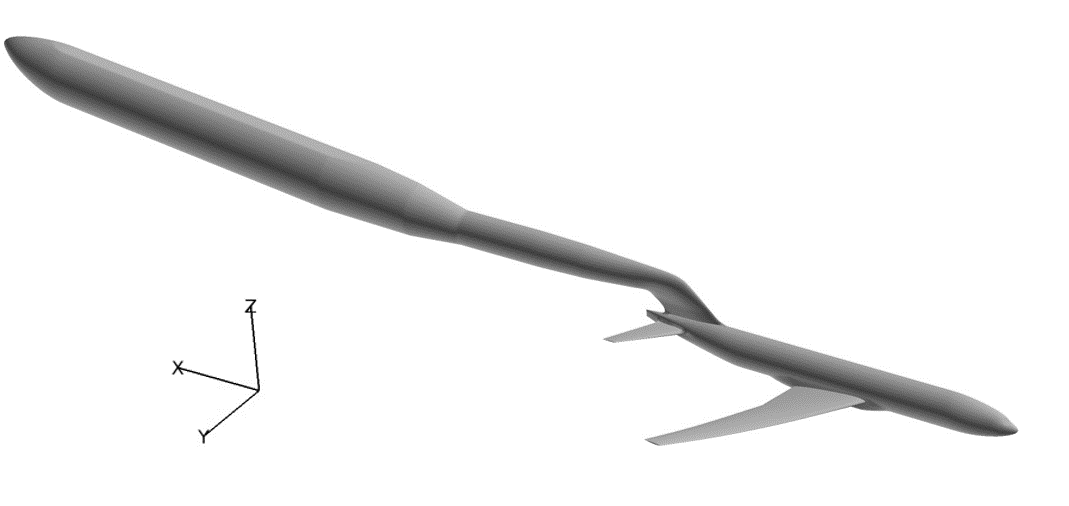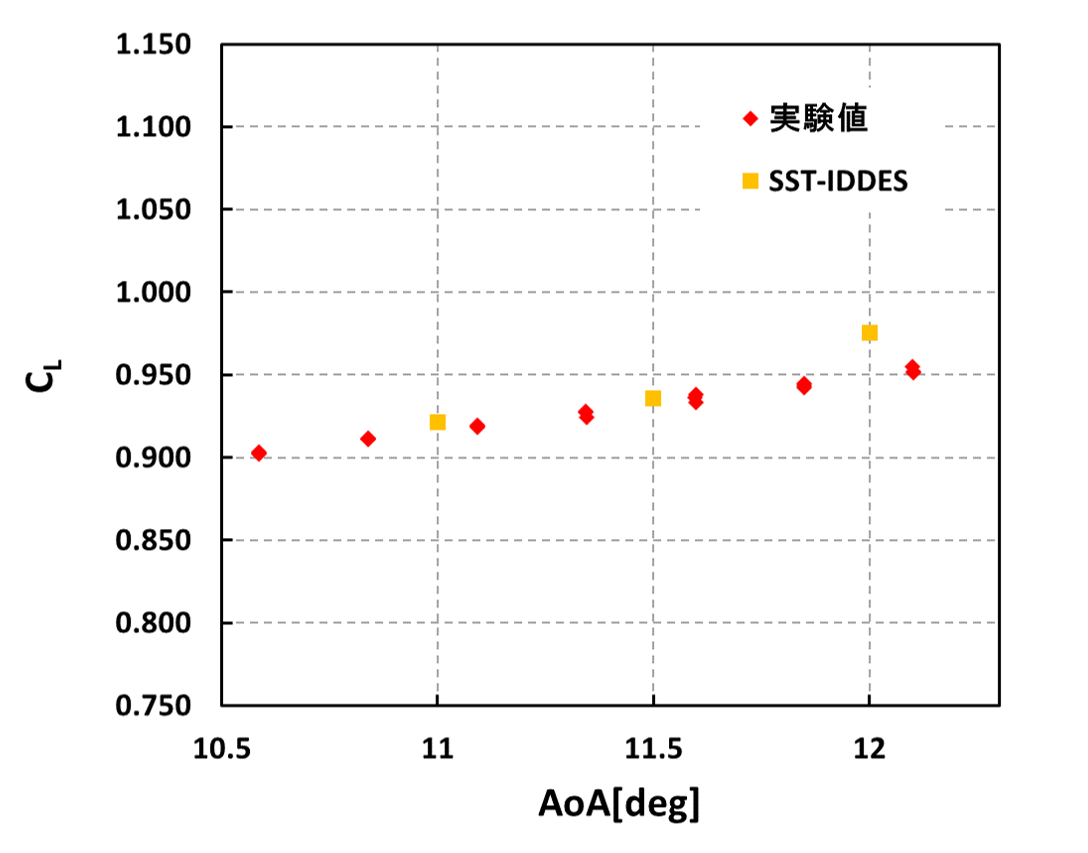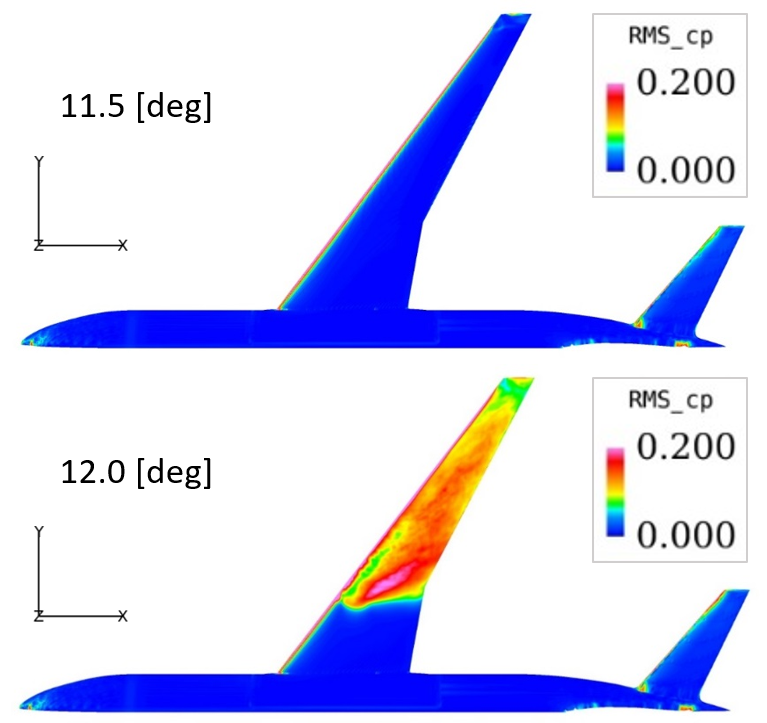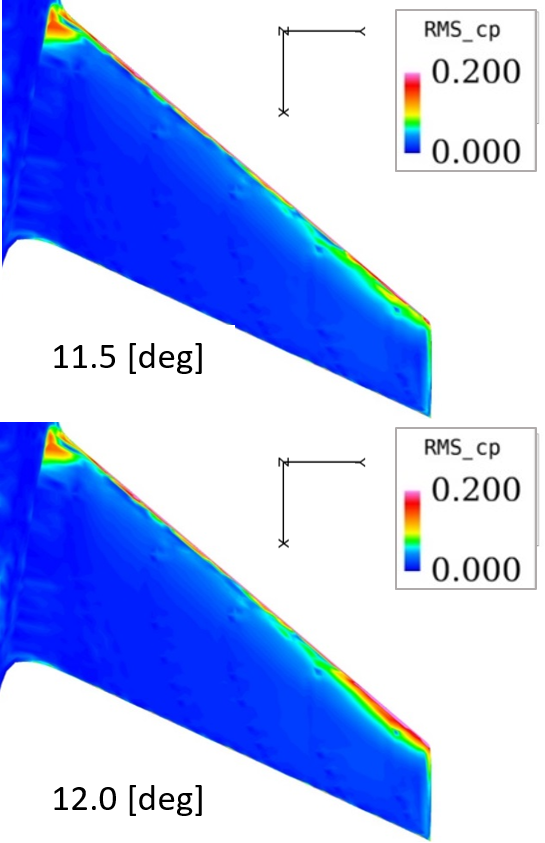Numerical study on low-speed buffet
JAXA Supercomputer System Annual Report April 2018-March 2019
Report Number: R18ETET26
Subject Category: Skills Acquisition System
- Responsible Representative: Takashi Aoyama, Aeronautical Technology Directorate, Numerical Simulation Research Unit
- Contact Information: Masashi Kanamori(kanamori.masashi@jaxa.jp)
- Members: Masashi Kanamori, Takahiro Yoshikawa
Abstract
It is of a great importance to predict a so-called low-speed buffet phenomenon for realizing safer flight. During a flight with a high angle-of-attack condition in a low-speed regime, separated flow at a leading edge of main wing impinges on its tail, resulting in a hazardous vibration. Our research group works on a preliminary study on low-speed buffet by means of computational fluid dynamics (CFD) in order to grasp the essence of the phenomenon.
Reference URL
N/A
Reasons for using JSS2
It is absolutely necessary to prepare a computational grid with high-resolution near the separated zone in order to predict a low-speed buffet phenomenon accurately. The number of grid point is of the order of tens of millions, which is prohibitively large from a view point of a computation with a personal computer. The processing capability of JSS2 is therefore necessary for our research.
Achievements of the Year
We have computed aerodynamics on NASA Common Research Model (CRM) with support device(Fig.1).
A good agreement was found in the IDDES analysis using the SST model in terms of the lift coefficient at each angle of attack compared with the experimental values[Uchiyama et al., AIAA 10.2514/6.2019-2190, 2019](Fig.2).We focused on the RMS value of the pressure coefficient in the analysis result. The angle of attack changes from 11.5 [deg] to 12.0 [deg] and behaves largely differently on the upper surface of the main wing. At the same time as the change, the differences became larger on the upper surface of the tail mainly at the tip of the tail(Fig.3, Fig.4).
Publications
– Oral Presentations
T.Yoshikawa, M.Kanamori, Y.Inada, “Numerical study on Numerical study on influence of wake on tailplane under low-speed buffet conditions”, The 56th Aircraft Symposium, 2018
Usage of JSS2
Computational Information
- Process Parallelization Methods: MPI
- Thread Parallelization Methods: N/A
- Number of Processes: 480
- Elapsed Time per Case: 170 Hour(s)
Resources Used
Fraction of Usage in Total Resources*1(%): 0.38
Details
Please refer to System Configuration of JSS2 for the system configuration and major specifications of JSS2.
| System Name | Amount of Core Time(core x hours) | Fraction of Usage*2(%) |
|---|---|---|
| SORA-MA | 3,381,372.13 | 0.41 |
| SORA-PP | 6,705.34 | 0.05 |
| SORA-LM | 3,099.24 | 1.44 |
| SORA-TPP | 0.00 | 0.00 |
| File System Name | Storage Assigned(GiB) | Fraction of Usage*2(%) |
|---|---|---|
| /home | 476.84 | 0.49 |
| /data | 9,765.63 | 0.17 |
| /ltmp | 1,953.13 | 0.17 |
| Archiver Name | Storage Used(TiB) | Fraction of Usage*2(%) |
|---|---|---|
| J-SPACE | 0.00 | 0.00 |
*1: Fraction of Usage in Total Resources: Weighted average of three resource types (Computing, File System, and Archiver).
*2: Fraction of Usage:Percentage of usage relative to each resource used in one year.
JAXA Supercomputer System Annual Report April 2018-March 2019






